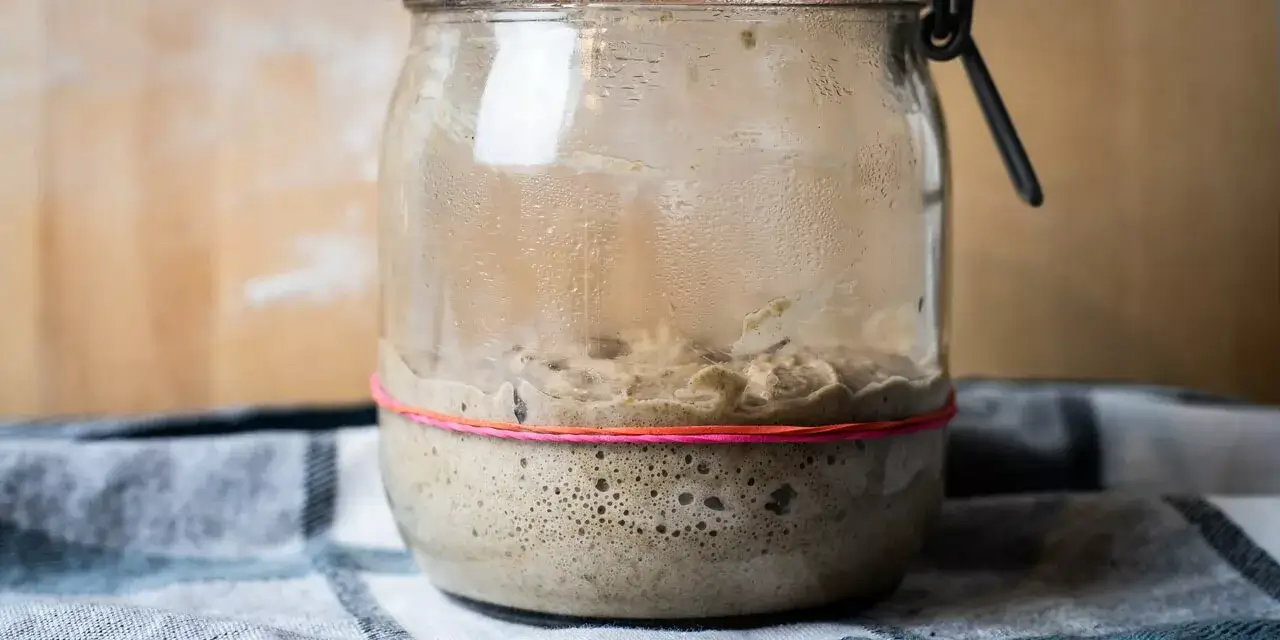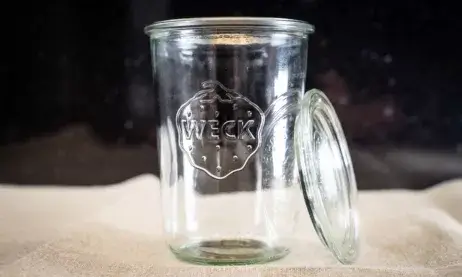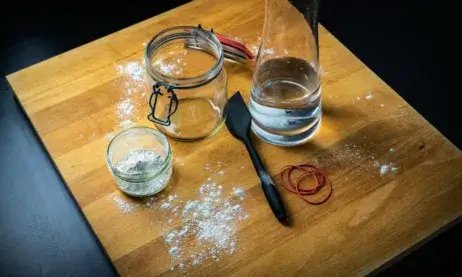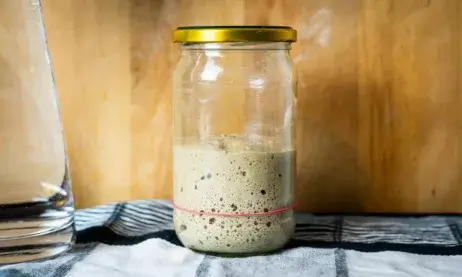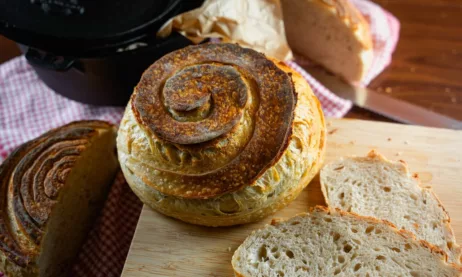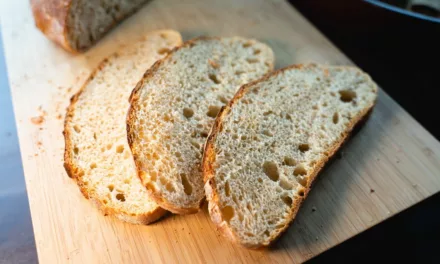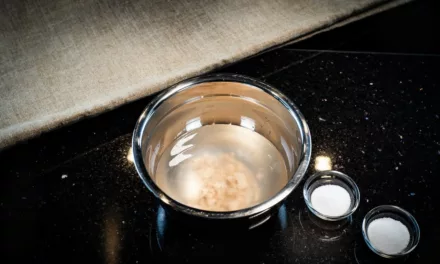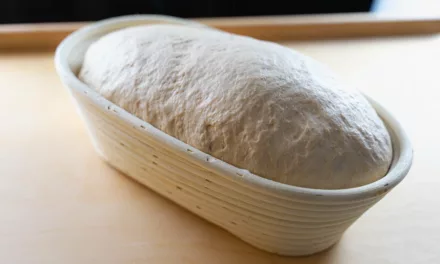Hello, fellow bakers! Today, we’re diving nose-first into the fascinating world of sourdough starters and their distinctive aromas.
Have you ever been puzzled by the unique smell of your sourdough starter? You’re not alone. The aroma of a sourdough starter can be a source of confusion, especially for beginners. But don’t worry, this guide is here to help you make sense of it all.
As a seasoned baker and sourdough enthusiast, I’ve spent years nurturing starters and baking loaves. I’ve experienced the full spectrum of sourdough smells and have learned to interpret them as a language of their own.
So, buckle up, and let’s embark on this aromatic journey together. By the end, you’ll be a sourdough-smell expert!
Table of Contents
- The Scent of Sourdough Starters
- Decoding Sourdough Starter Smells
- How to Fix a Starter that Smells Bad?
- The Changing Smells of Sourdough Starter Over Time
- Conclusion
The Scent of Sourdough Starters
Sourdough starters are living entities, teeming with yeast and bacteria. These microorganisms are responsible for the fermentation process that gives sourdough its unique taste and texture. But they also produce a variety of smells, depending on the stage of fermentation and the balance of yeast and bacteria.
A healthy, well-fed sourdough starter typically has a pleasant, slightly sour smell. This aroma is often compared to yogurt or buttermilk, indicating a good balance of yeast and lactic acid bacteria. It’s the smell of fermentation in full swing, a sign that your starter is ready to leaven a loaf of bread.
However, sourdough starters can also produce other smells. For instance, a strong smell of alcohol or vinegar can indicate that your starter is hungry and needs feeding. On the other hand, an unusually cheesy or milky smell might suggest an overgrowth of unwanted bacteria.
Understanding these smells can help you take better care of your starter and improve your sourdough baking. But don’t worry if you’re still a bit confused. Let’s delve deeper into the specific smells you might encounter.
As you embark on your sourdough journey, you’ll start to notice the unique scents that come with it. If you’re just starting out, my ultimate guide to sourdough can help you navigate this fascinating world.
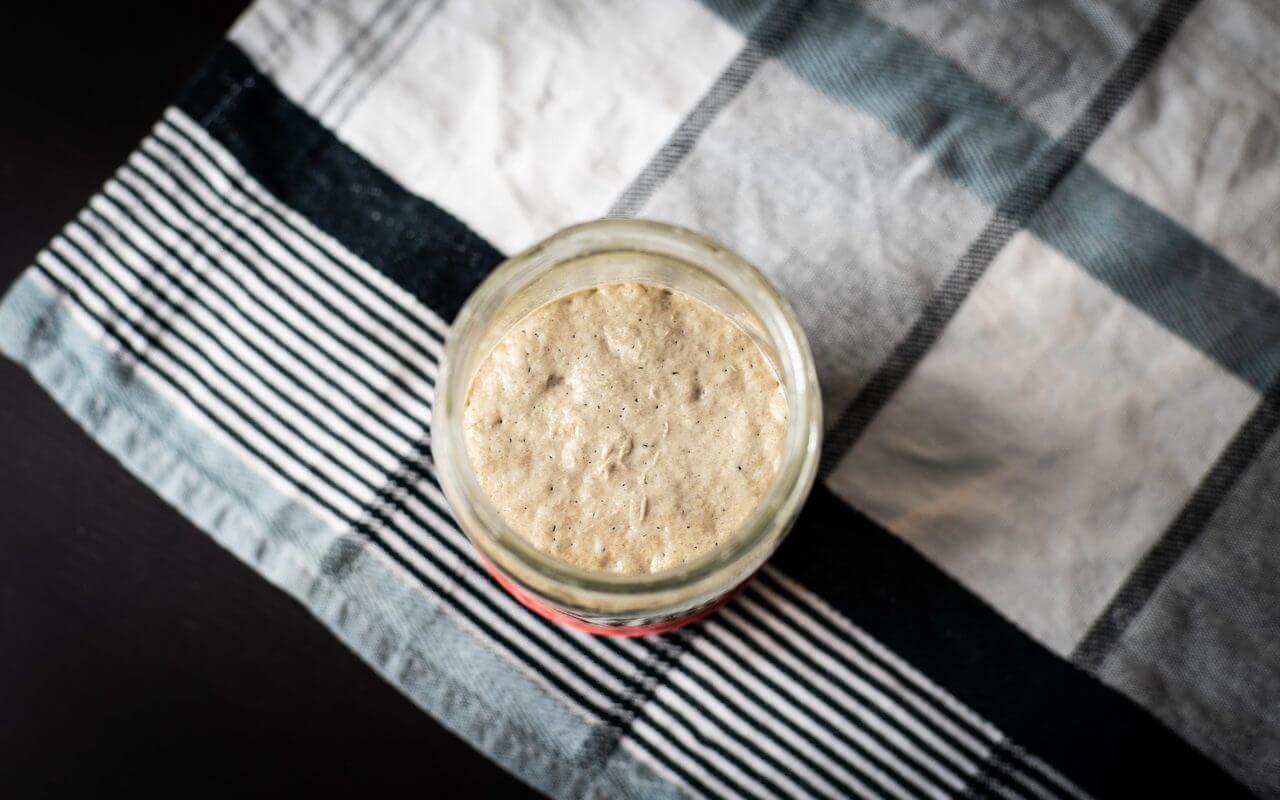
Decoding Sourdough Starter Smells
What does a healthy sourdough starter smell like?
A healthy sourdough starter should smell pleasantly sour, with notes of yogurt or buttermilk. This smell indicates a good balance of yeast and lactic acid bacteria, the microorganisms responsible for the fermentation process.
Is sourdough starter supposed to smell like alcohol?
If your sourdough starter smells strongly of alcohol or vinegar, it’s a sign that it’s hungry and needs feeding. This smell is produced by yeast when they run out of food and start producing alcohol. Don’t worry, though. Simply feeding your starter should bring it back to balance.
Should sourdough starter smell like sour milk?
An unusually cheesy or milky smell can indicate an overgrowth of unwanted bacteria. This can happen if your starter is kept in conditions that are too warm or if it’s not fed regularly. If your starter smells like this, it might need some extra care to bring it back to balance.
Should sourdough starter smell bad at first?
When you first create a sourdough starter, it might smell a bit off. This is normal. The initial stages of fermentation can produce some unusual smells, as different microorganisms compete for dominance. But as the starter matures and the balance of yeast and bacteria stabilizes, these smells should disappear.
What does dead sourdough starter smell like?
A dead sourdough starter might have a particularly unpleasant smell, like rotten eggs or spoiled milk. If your starter smells like this and shows no signs of activity (no bubbles or rise), it might be dead.
Why does sourdough starter smell terrible?
If your sourdough starter smells terrible, it might be contaminated with unwanted bacteria or mold. This can happen if the starter is not properly maintained or if it’s exposed to contaminants. In this case, it’s best to discard the starter and start a new one.
Should sourdough starter smell sweet?
A sweet smell is not typical for a sourdough starter, but it’s not necessarily a bad sign. It might indicate a high activity of yeast, producing more fruity esters than usual. As long as your starter shows signs of healthy fermentation (bubbles and rise), it should be fine.
Understanding the smells of your sourdough starter is key to maintaining its health. For more tips on keeping your starter in top shape, check out my guide on how to maintain a sourdough starter.
How to Fix a Starter that Smells Bad?
If your sourdough starter has developed an unpleasant smell, don’t panic. There are several steps you can take to bring it back to health.
1. Feed Your Starter
Often, a bad smell is simply a sign that your starter is hungry. Regular feedings can help restore the balance of yeast and bacteria and eliminate the bad smell. Remember to discard a portion of your starter before each feeding to keep the population of microorganisms manageable.
2. Change the Feeding Ratio
If regular feedings aren’t enough, you might need to change your feeding ratio. Try feeding your starter with more flour to dilute the population of microorganisms and give them more food to consume. A common feeding ratio is 1:1:1 (starter:water:flour by weight), but you can try a 1:2:2 or even 1:3:3 ratio if your starter smells particularly bad.
3. Change the Feeding Schedule
Another option is to feed your starter more frequently. Instead of feeding it once a day, try feeding it every 12 hours. This can help keep the yeast and bacteria well-fed and prevent the development of unpleasant smells.
4. Use a Different Type of Flour
The type of flour you use can influence the balance of microorganisms in your starter. If you’re using all-purpose flour, try switching to whole grain flour, which contains more nutrients and can help promote a healthy balance of yeast and bacteria.
5. Start Over
If all else fails, you might need to start over with a new starter. While it’s disappointing to discard a starter, sometimes it’s the best option. And remember, every failed starter is an opportunity to learn and improve your sourdough baking skills so don’t worry – it’s not the end of the world. You can always start fresh with my step-by-step guide on how to create a sourdough starter.
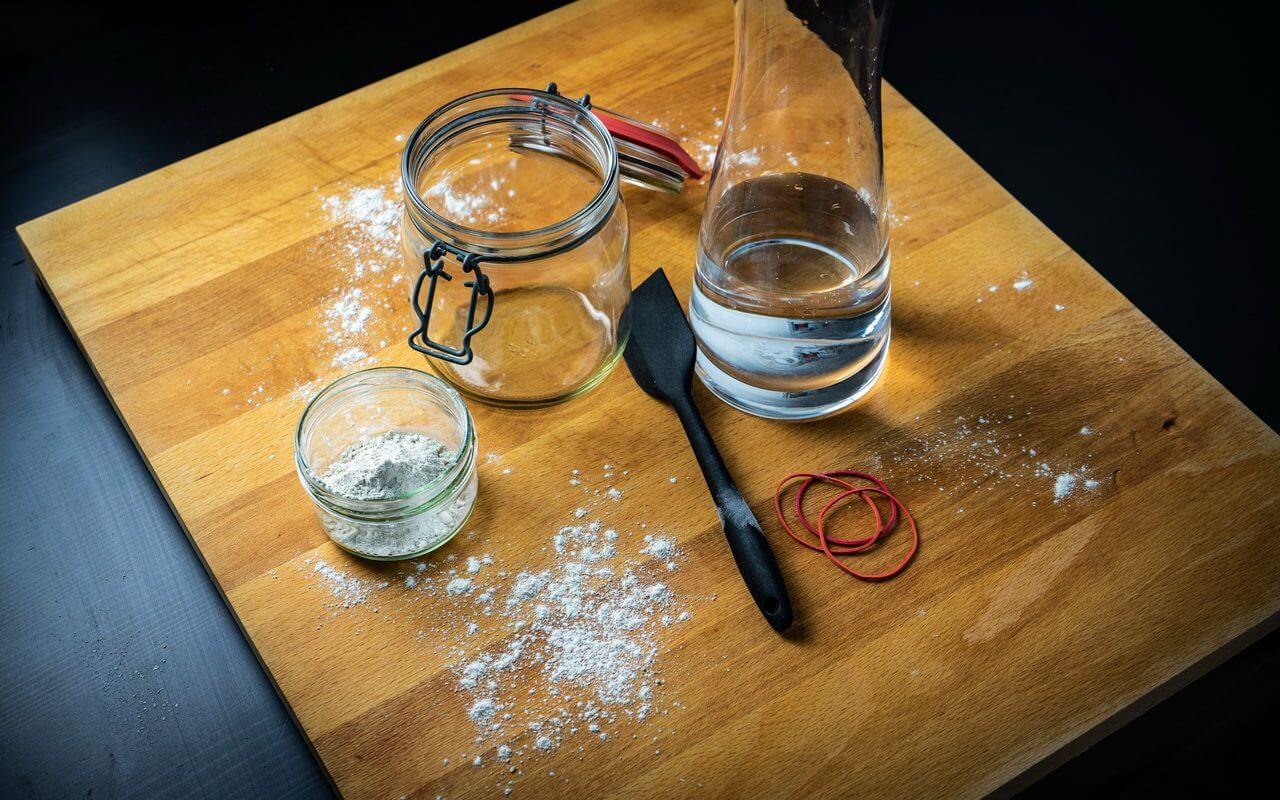
The Changing Smells of Sourdough Starter Over Time
As a living entity, a sourdough starter evolves over time, and so does its smell. This aromatic journey can tell you a lot about the health and fermentation stage of your starter.
The Early Days: First 1-3 Days
When you first mix flour and water to create a sourdough starter, it might not smell like much. But as the fermentation process kicks off, you might notice a variety of smells. It’s not uncommon for a new starter to smell a bit unpleasant or off during the first few days. This is a result of different types of bacteria and yeast starting to grow and compete for dominance.
The Middle Stage: Day 4-7
Around the fourth day, the smell of your starter should start to change. The unpleasant smells should start to diminish, replaced by more yeasty and sour notes. This is a sign that the beneficial yeast and lactic acid bacteria are starting to establish themselves.
The Mature Stage: After 1 Week
Once your starter is fully mature (usually after about a week), it should have a pleasant, slightly sour smell. This is the smell of a healthy, well-fed starter, ready to leaven a loaf of bread. The aroma can be compared to yogurt or buttermilk, indicating a good balance of yeast and lactic acid bacteria.
The Hungry Starter
If your starter smells strongly of alcohol or vinegar, it’s a sign that it’s hungry and needs feeding. This smell is produced by yeast when they run out of food and start producing alcohol. Regular feedings should prevent this smell from developing.
The Neglected Starter
If a starter is neglected and not fed for a long time, it might develop a particularly unpleasant smell, like rotten eggs or spoiled milk. This is a sign that the starter is unhealthy and might need to be discarded.
As your starter matures, its smell will change. This is a normal part of the process. To ensure your starter stays healthy, consider storing it in a suitable container. My baker’s guide to sourdough starter jars can help you choose the right one.
Conclusion
Understanding the smells of your sourdough starter is an essential part of sourdough baking. It can help you take better care of your starter and improve your baking results. So next time you feed your starter, take a moment to appreciate its aroma. It’s not just a smell, but a language, telling you the story of the microorganisms that make your sourdough bread possible.
Remember that baking with sourdough isn’t just about creating delicious bread – it’s also about reaping the health benefits. To learn more about the nutritional wonders of sourdough, check out my blog post on sourdough health benefits.

